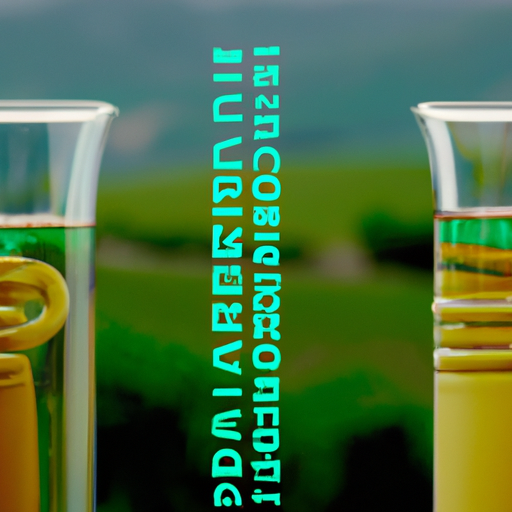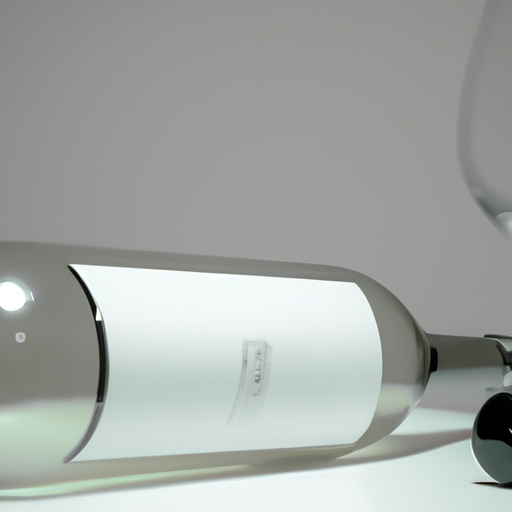Benefits of Aerating Wine: How Does It Enhance the Flavor?
Understanding the Distinction: Aerating vs Decanting
When it comes to enjoying a glass of wine, there are various techniques that can enhance the flavor and overall experience. Two popular methods that are often confused with each other are aerating and decanting. While both techniques involve exposing the wine to air, they serve different purposes and can have different effects on the wine. In this article, we will focus on the benefits of aerating wine and how it enhances the flavor.
Aerating wine is the process of exposing the wine to air in order to allow it to breathe. This can be done by pouring the wine into a decanter or using a specialized aerator. The main purpose of aerating is to soften the tannins in the wine and release its aromas. Tannins are natural compounds found in grape skins, seeds, and stems, and they can contribute to the bitterness and astringency of the wine. By allowing the wine to breathe, the tannins become less harsh, resulting in a smoother and more enjoyable taste.
One of the key benefits of aerating wine is that it can help to open up the aromas of the wine. When a wine is first opened, it may have a tight or closed nose, meaning that the aromas are not fully expressed. By exposing the wine to air, the aromas are released and become more pronounced. This can greatly enhance the overall sensory experience of drinking the wine, as the aromas play a crucial role in our perception of flavor.
In addition to softening the tannins and releasing the aromas, aerating wine can also help to improve the overall balance and integration of the wine. When a wine is young, it may have a high level of acidity or alcohol, which can make it taste unbalanced or disjointed. By allowing the wine to breathe, these elements can mellow out and become more integrated, resulting in a more harmonious and enjoyable taste.
It is important to note that not all wines benefit from aerating. Light-bodied and delicate wines, such as white wines or older red wines, may not need to be aerated as they are already more expressive and delicate in nature. On the other hand, full-bodied and tannic wines, such as young red wines or wines made from bold grape varieties like Cabernet Sauvignon, can greatly benefit from aerating.
In conclusion, aerating wine is a technique that can greatly enhance the flavor and overall enjoyment of the wine. By softening the tannins, releasing the aromas, and improving the balance and integration of the wine, aerating allows the true character of the wine to shine through. However, it is important to consider the type of wine being aerated, as not all wines will benefit from this technique. So, the next time you open a bottle of wine, consider giving it some time to breathe and experience the difference it can make in your glass.
The Science Behind Decanting: How Does It Improve Wine?

Decanting wine is a practice that has been around for centuries, but have you ever wondered why it is done? What is the science behind decanting and how does it actually improve the taste of wine? In this article, we will explore the answers to these questions and gain a deeper understanding of the distinction between aerating and decanting.
To begin, let’s first define what decanting is. Decanting is the process of pouring wine from its original bottle into a separate container, typically a decanter. This allows the wine to come into contact with oxygen, which is believed to enhance its flavors and aromas. But how does this actually work?
When wine is exposed to oxygen, a chemical reaction occurs. This reaction, known as oxidation, can have both positive and negative effects on the wine. On one hand, oxidation can help soften harsh tannins and mellow out the flavors of a young wine. On the other hand, too much oxidation can lead to the wine becoming flat and losing its vibrant characteristics.
So, how does decanting strike the right balance? The key lies in the controlled exposure to oxygen. By pouring the wine into a decanter, the surface area of the wine is increased, allowing for a gradual and controlled oxidation process. This helps to unlock the wine’s full potential without overwhelming it.
But what about aerating? Isn’t that the same as decanting? While both processes involve exposing the wine to oxygen, there is a subtle distinction between the two. Aerating refers to the act of introducing air into the wine, typically by swirling it in the glass or using a specialized aerator. This process is often done immediately before serving the wine, whereas decanting is done in advance to allow for a longer period of oxidation.
So, why would one choose to decant rather than simply aerate? The answer lies in the characteristics of the wine itself. Some wines, particularly older ones or those with a high tannin content, benefit from the extended exposure to oxygen that decanting provides. This allows the wine to open up and reveal its true flavors and aromas. In contrast, younger wines or those with delicate flavors may only require a brief period of aeration to achieve the desired effect.
In conclusion, the science behind decanting wine lies in the controlled exposure to oxygen. By decanting, we allow the wine to gradually oxidize, enhancing its flavors and aromas without overwhelming it. While aerating can also introduce oxygen to the wine, decanting offers a longer period of oxidation, making it particularly beneficial for certain types of wines. So, the next time you open a bottle of wine, consider whether decanting or aerating is the best approach to fully appreciate its unique qualities.
Aerating vs Decanting: Which Method is Best for Different Types of Wine?
Understanding the Distinction: Aerating vs Decanting
When it comes to enjoying a good bottle of wine, there are various methods that can enhance its flavor and aroma. Two popular techniques that are often used are aerating and decanting. While both methods serve the purpose of improving the wine’s taste, they differ in their approach and the types of wines they are best suited for.
Aerating, also known as “breathing,” involves exposing the wine to air. This process allows the wine to mix with oxygen, which helps to soften its tannins and release its aromas. Aerating is typically done by pouring the wine into a decanter or swirling it in the glass. This method is particularly effective for young, bold red wines that have high tannin levels. By aerating these wines, you can mellow out their harshness and bring out their complex flavors.
On the other hand, decanting is the process of transferring the wine from its original bottle to a separate container, known as a decanter. The main purpose of decanting is to separate the wine from any sediment that may have formed over time. Sediment is a natural byproduct of the aging process and can be found in older red wines, especially those that have been aged for several years. By decanting the wine, you can leave the sediment behind and enjoy a clear, sediment-free glass of wine.
Decanting is particularly beneficial for older red wines that have had time to develop and mature in the bottle. These wines often have complex flavors and aromas that can be enhanced by the decanting process. By allowing the wine to come into contact with the air in the decanter, it can open up and reveal its full potential. This is especially true for wines that have been stored for a long time and may have a tight structure that needs time to unwind.
While both aerating and decanting can improve the taste of wine, it is important to consider the characteristics of the wine before deciding which method to use. Young, bold red wines with high tannin levels are best suited for aerating. By exposing these wines to air, you can soften their tannins and allow their flavors to develop. On the other hand, older red wines with sediment are better suited for decanting. By separating the wine from the sediment, you can enjoy a clear and flavorful glass of wine.
It is worth noting that not all wines benefit from aerating or decanting. White wines, for example, are generally not aerated or decanted as they do not have the same tannin levels or sediment as red wines. Additionally, delicate and light-bodied red wines may not require aerating or decanting as they can be easily overwhelmed by the process.
In conclusion, understanding the distinction between aerating and decanting is essential for wine enthusiasts who want to enhance their wine-drinking experience. While both methods serve the purpose of improving the taste and aroma of wine, they differ in their approach and the types of wines they are best suited for. By considering the characteristics of the wine, such as its age, tannin levels, and sediment, you can determine whether aerating or decanting is the best method to use. So, the next time you open a bottle of wine, take a moment to consider whether it would benefit from aerating or decanting, and enjoy the full potential of your wine.




